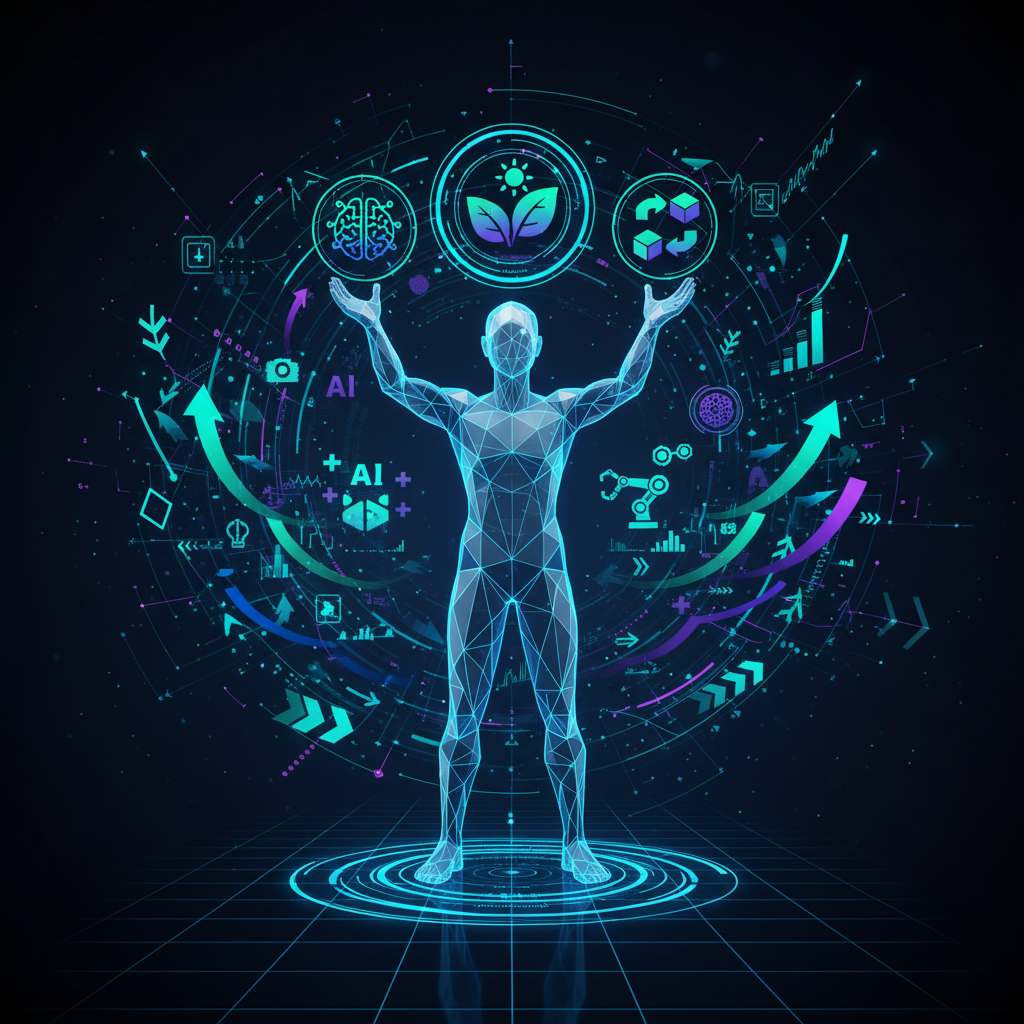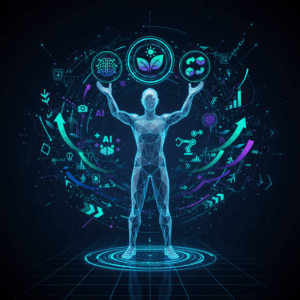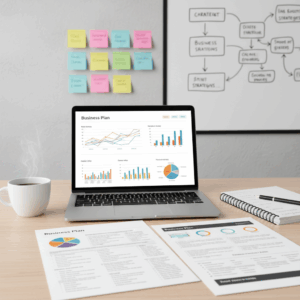Technological trends in entrepreneurship 2025
By 2025, technology will be a fundamental pillar of entrepreneurship, guiding the creation of innovative and efficient solutions. Technological integration will allow entrepreneurs to optimize resources and improve their processes.
Artificial intelligence and emerging technologies in particular will make a difference, boosting productivity and creating new opportunities in various sectors.
These trends not only accelerate growth but also foster adaptability in a dynamic and competitive market.
Artificial intelligence for process optimization
Artificial intelligence (AI) is positioned as the primary tool for automating and optimizing internal processes in startups. Its use significantly reduces operating times and costs.
In addition, AI enables the analysis of large volumes of data to improve decision-making, anticipate trends, and personalize services more precisely.
Its applications range from inventory management to customer service, making businesses more agile and efficient in the face of market challenges.
Emerging Technologies: Blockchain and Augmented Reality
Blockchain provides transparency and security in transactions, facilitating trust between customers and businesses, as well as the traceability of products and services.
On the other hand, augmented reality (AR) offers interactive experiences that enrich the commercial offering, allowing users to interact with products in innovative ways.
These emerging technologies boost differentiation and open up new avenues for connecting with consumers in an increasingly digital environment.
Sustainability and environmental commitment
By 2025, sustainability will be a key factor in entrepreneurship, driving products and services that meet stricter environmental regulations. This forces companies to adapt and offer environmentally responsible solutions.
Environmental commitment not only enhances brand image, but also generates long-term value, attracting conscious consumers and contributing to more equitable and sustainable economic development.
Furthermore, the implementation of sustainable practices will promote the incorporation of regenerative models and the circular economy, strengthening the relationship between business and nature.
Sustainable products and services with ecological regulations
Products and services must comply with environmental regulations that protect natural resources and reduce negative impacts. This requires innovation in materials and processes.
Compliance with these regulations guarantees quality and responsibility, distinguishing companies that prioritize sustainability in their operations and business strategies.
Thus, the market will see an increase in demand for eco-friendly alternatives that respond to global challenges such as climate change and pollution.
Circular economy and regenerative solutions
The circular economy will be key in 2025, promoting recycling, reuse, and designing for long product lifecycles, reducing waste.
Regenerative solutions will go further, focusing on restoring ecosystems and improving environmental health through innovative and sustainable business practices.
This approach allows businesses to actively contribute to ecological balance, transforming waste into valuable resources and fostering environmental resilience.
High-potential sustainable sectors
Sectors with the greatest sustainable potential will include urban agriculture, renewable energy, recycling, and personalized digital health, contributing to a green economy.
These sectors combine technological innovation with ecological principles, becoming engines of growth and job creation while protecting the planet.
Increased investment and social awareness in these areas will signal a firm transition toward responsible, future-oriented business models.
Personalization and customer experience
Personalization will be a key factor in 2025 for differentiating brands and building customer loyalty. Using advanced technologies, companies will tailor their offerings to specific needs.
This approach will allow for the creation of unique experiences, increasing satisfaction and emotional connection with the audience. Artificial intelligence will play a central role in this process.
Extreme personalization through data analysis and AI
Data analysis combined with artificial intelligence allows for the identification of individual behavior patterns and preferences, facilitating highly precise personalization.
This enables tailored offers and communications in real time, improving the customer experience and increasing conversions and brand loyalty.
Furthermore, extreme customization helps anticipate needs and create products or services that respond to the specific demands of each user.
Companies that adopt these strategies will be better positioned to compete in an increasingly demanding and customer-oriented market.
Innovative strategies and business models
By 2025, strategic flexibility will be key for businesses to quickly adapt to market changes and new consumer demands.
Furthermore, multi-sector collaborations will allow entrepreneurs to combine knowledge and resources, creating synergies that boost innovation and competitiveness.
These models foster a more dynamic business ecosystem, capable of responding effectively to complex challenges and taking advantage of emerging opportunities.
Strategic flexibility and multi-sector collaborations
Strategic flexibility involves adjusting plans and tactics to the environment, fostering resilience in the face of market uncertainties.
On the other hand, multi-sector collaborations bring together experts from different areas to generate comprehensive and disruptive solutions, enriching the creative process.
This union of forces facilitates access to new technologies, markets, and knowledge, accelerating the implementation of innovative ideas with greater impact.
Building authentic and collaborative communities
Creating authentic communities involves establishing genuine relationships with customers, building trust and loyalty through consistent and transparent interaction.
These collaborative communities encourage the co-creation of products and services, increasing active consumer participation in business development.
The result is a stronger and more sustainable business model, where two-way communication and a sense of belonging strengthen the brand and its growth.






